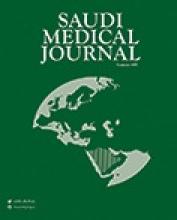Abstract
Objectives: To determine the patterns and prevalence of human papilloma virus (HPV) genotypes in people who are not vaccinated with HPV vaccines in Zunyi.
Methods: We retrospectively collected all HPV testing results in 3,393 patients at the Third Affiliated Hospital in Zunyi Medical University, Zunyi, China between January 2014 and December 2016. The prevalence of HPV genotypes based on different stages of cervical lesions and age groups was analyzed. The clinical data of 347 HPV-positive inpatients were also retrospectively collected, and difference in the age at first sexual encounter, smoking, pregnancy, and abortion status were compared.
Results: A total of 511 patients were infected with HPVs, with an overall positive rate of 15.1% (511/3,393). The most prevalent HPV genotypes were HPV-16 with prevalence rates of 24.9%, HPV-68 with 17.6%, HPV-52 with 16.2%, and HPV-58 with 14.3%. High prevalence of HPV-16 and HPV-68 in inpatients with pre-cancer and cancer lesions was one of the predominant findings. The coverage rates against cervical pre-cancer and cancer lesions for the 2 HPV vaccines, Cervarix was 35.4% and Gardasil 9 was 57%. Smoking and multiple pregnancy were more common in inpatients with HPV-16 and HPV-68 infection than those with other genotypes.
Conclusions: Human papilloma virus-16 and HPV-68 are the 2 most prevalent and high-risk HPV genotypes in non-vaccinated women in Zunyi, which may serve as a guide for HPV management in Zunyi, China.
Footnotes
Disclosure. Authors have no conflict of interests, and the work was not supported or funded by any drug company. This study was supported by research grants from Innovation talent team of science and technology jointly provided by Zunyi City and the first people’s hospital of Zunyi (No. 17, 2015), the special fund for science and technology cooperation between Guizhou Province and Zunyi City (No. 38, 2015), and Projects of the National Natural Science Foundation of China (81760475).
- Received January 22, 2018.
- Accepted May 17, 2018.
- Copyright: © Saudi Medical Journal
This is an open-access article distributed under the terms of the Creative Commons Attribution-Noncommercial-Share Alike 3.0 Unported, which permits unrestricted use, distribution, and reproduction in any medium, provided the original work is properly cited.






